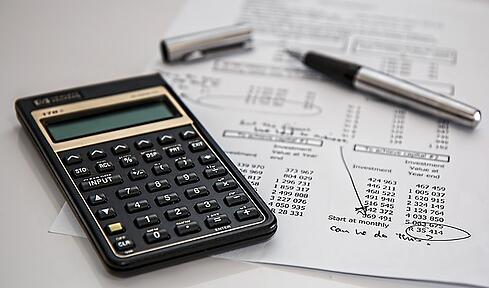Thinking about how much money is required to get a small business up and running can be daunting. Getting it right will contribute to the success of your business. You don’t want to run out of funds before your business is profitable. Startup capital is the amount of funds needed to purchase or start a new business venture. Follow the tips outlined below to make planning for startup business costs simpler.

Startup Capital Needed =
Total Funds Available – Total Funds Needed for Startup Costs
The equation to determine how much capital is needed to start a business seems simple, right?
First, estimate the total funds you have available for your venture. This calculation is fairly straight forward. How much money do you have in your bank accounts? Do you have personal assets you can sell at a profit? Total the amount of money available from all of these sources to arrive at “Total funds available.”
Second, estimate total costs needed to open/purchase your new business venture. This is a two-step process. Capturing the total amount of startup costs is not as easy to calculate. Every business is different. Some businesses need more capital upfront to purchase equipment. Others, such as service firms, may need to have cash available to pay their employees until they can bill for and receive payment on services provided.
To Estimate Total Funds Needed for Startup Costs:
Step One: Think of all of the expenses you’ll need to spend money on to get your business started, a.k.a. startup costs. Include those expenses that are specific to your business as well as those that pertain to most businesses.
Break your list of startup costs into two categories:
One-time Costs Recurring Costs
Examples of one-time costs are purchase price/down payment, organizational fees, furniture, fixtures and improvements, computer hardware and software, licenses and fees, logos, brochures, stationary, signs, website costs, deposits to utilities, prepaid rent, insurance, franchise fees.
Examples of recurring costs are utilities, rent, payroll, supplies, insurance, bank fees, ingredients or other raw materials used for output.
Ask yourself, “Have I considered everything that’s needed to start my business?” Then put the list away. Repeat this process several times until you’re sure you’ve got a complete list. Always include a line item for “unexpected costs” under both categories. Inevitably, there will be costs that even the best planners don’t anticipate.
Step Two: Estimate the amount it will cost for each of those items. Be realistic. I’ve seen people underestimate the amounts used to calculate total startup costs. Either they think they can do better than the average person to cut costs, or they haven’t done their research. This leaves them short of the cash they need to run their business. Total the amount in each column to arrive at “Total Funds Needed for Startup Costs.”
Ask Yourself Two Final Questions: “Am I buying an existing business or starting a new business?” and “Do I have other sources of income available?” Your answers will determine whether you need extra cash to operate your business.
If you’re buying an existing business, you’re less likely to need operating cash to cover recurring business costs. Ideally, you have a product that is market ready and a customer base that wants your product and the business has historically been profitable. It takes an average of 12 – 18 months1 for a new business to see a profit.
If you’re relying solely on your business to cover both business and personal expenses, you need to make sure you have cash to cover all of those costs for a period of time.
The equation will be modified like this:
(Total One-Time Startup Costs + ((Total Recurring Costs) X
(# of Months Needed to Cover Operating and/or Personal Expenses)))

When Solving the Equation, Is Your Startup Capital Needed Positive or Negative?
Once you’ve done your homework, fill-in the equation with your numbers.
- If the amount of Startup Capital Needed is a positive number, you’re on your way to starting your business.
- If the amount of Startup Capital Needed is a negative number, you’ll need to find additional capital to finance your business.
My "Startup Capital Needed" Number is Negative. Now What?
You’ll need additional capital to finance your business. Most business owners finance their new ventures with loans. Using available retirement funds is another way to fund a business opportunity. Although written during the most recent recession, Entrepreneur Magazine’s article, “Should You Tap Your 401(k) to Start Your Business?” still furnishes a helpful overview of the topic. Friends and family who have cash to lend or want to invest in your venture are also potential sources of capital. Regardless of whether or not you’re ready to start your venture or need to get financing, the time you spend calculating your capital startup needs is bound to save some headaches in the future.
Read more about business financing on the Bread Business Blog:
Want to Learn More About Bakery Franchise Ownership with Great Harvest?
References:
1. Allbusinessloans.com. (2013). Top Reasons for Small Business Success and Failure. [Allbusinessloans.com].Retrieved from http://allbusinessloans.com/top-reasons-for-small-business-success-and-failure/. Note: Infographic, citing data sources such as SBA.gov, BusinessInsider.com, Entreupreneur.com.
2. Bennet, J. (2010). Should You Tap Your 401(k) to Start Your Business? [Entrepreneur.com]. Retrieved from http://www.entrepreneur.com/article/207190





